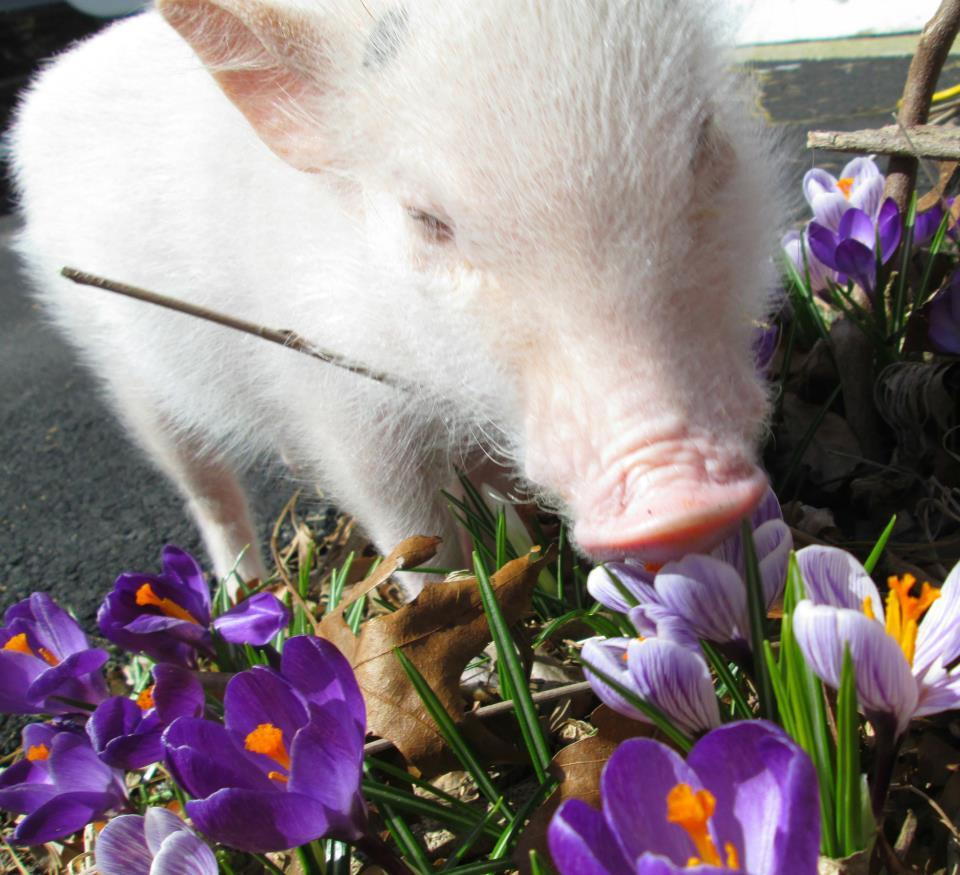After experiencing a very long and often times difficult and snowy winter most of us are anxious for the arrival of more favorable spring-like conditions. However, with the onset of blooming flowers, budding of trees and the greening of lawns, there also comes the presence of added risks to our pets well being.
One of the early harbingers of spring is the appearance of certain plants and flowers, all of which can pose dangers to both dogs and cats. The crocus is now evident and actually comes in two varieties. The most common spring crocus has the potential of gastro-intestinal upsets when digested. However, beware of the autumn form. It is extremely toxic to animals. Not only vomiting and gastrointestinal bleeding may develop, but also multi-organ failure and bone marrow suppression can be seen.
The daffodil, of course, will soon be in abundance. Their flowers contain Lycorine, an alkaloid. The ingestion of the plant, bulb, or flower can produce severe vomiting, diarrhea, abdominal pain, cardiac arrhythmia and respiratory depression. In addition, the tulip can be a concern. Toxic principles, more toxic in the bulb, are allergenic factors that frequently result in irritation to the oral cavity and esophagus. Azalea’s are extremely popular and a favorite in many yards. Pet owners should be aware that ingestion of just a few of their leaves can produce not only GI symptoms but also weakness and in extreme cases, coma.
The application of mulch in gardens, flower beds and around shrubs is a common practice to both landscapers and home owners. We as pet owners should be knowledgeable of the risks associated with “cocoa bean” mulch. This mulch made from the shells of cocoa beans can be purchased at most garden centers. Because it has a fine texture, and can produce a sweet aroma when exposed to sunshine and warmer temperatures, some dogs find it extremely appealing. However, this product contains methylxanthines such as theobromine and caffeine that could lead to significant health issues when consumed. The risk really is dependent on the animals’ size, amount of mulch digested and also the level of theobromine in the mulch, which varies widely depending on the brand. Commonly seen symptoms are similar to those observed with chocolate toxicity. Vomiting, diarrhea, abnormal pain, rapid heart rate, muscle tremors and seizures are all possible. If you believe your pet has devoured this product prompt veterinary intervention and care is usually necessary.
When deciding on which lawn care products to use in the upcoming months, choosing an EPA certified organic fertilizer is a smart choice when it comes to your pets. Also, some common sense rules of thumb should be applied as well. Do not over apply any product. Watering your lawn immediately after the application and allow to dry before letting your pets out should be considered. The washing of your pets feet before they are let back inside and treating on a small section of the yard at a time is also suggested. If you wish to avoid any chemicals, grass clippings that when decomposed release 3% nitrogen into the soil, potash, cornmeal, cottonseed meal can all provide long term nutrients to lawns. It is also important to know that care should be taken when it comes to the use of blood meal. It contains 12% Nitrogen but when ingested by our animals it could lead to not only vomiting and diarrhea but more importantly the development of severe pancreatitis. Also bone meal consumption could cause the formation of a large cement like bone ball in their stomach leading to obstruction.
Gardeners love their compost, but because they can be potentially lethal to both pets and wildlife it is essential that they be adequately fenced off. When organic matter decomposes it is very common for mold to grow, some of which can produce tremogenic mycotoxins. Physical distress can be witnessed in as little as thirty minutes after ingestion. Agitation, panting, excessive salivation, vomiting, tremors and seizures can commonly occur.
So, with the approaching return to milder outdoor conditions, lets not only think about getting out the rakes, tuning up the mower and spring clean ups, but also the potential dangers that may be present to our pets. If any fears, questions, or problems arise, please contact the Animal Hospital of Orleans or an emergency facility to ensure their proper care, treatment and swift recovery.
